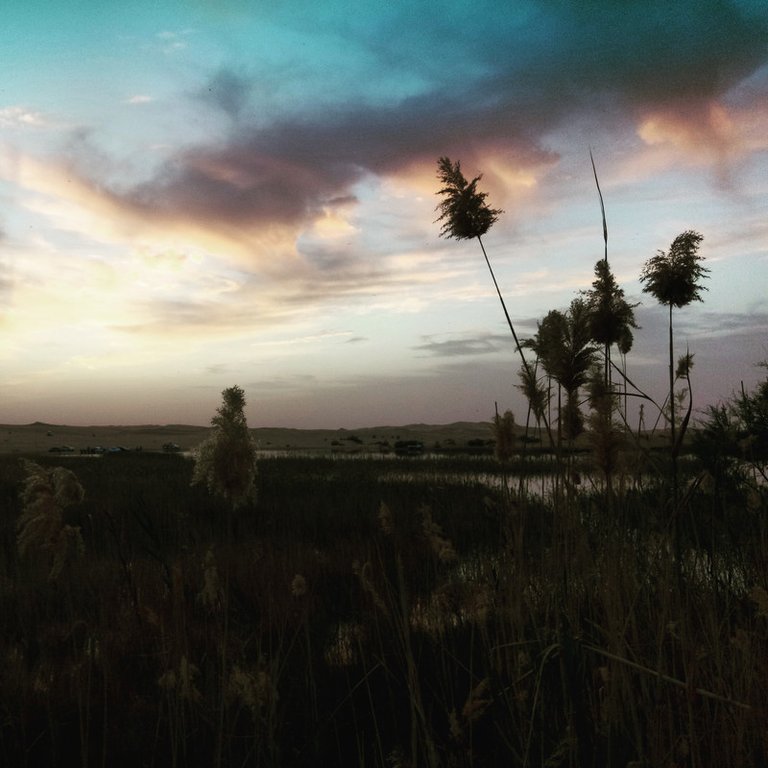In the past few days, I stumbled upon a post written by @daveks titled as "++Shoreline Art++" and irrespective of its specific subject matter, it ignited my inspiration to delve into the broader theme of colors and their psychological influence. I am intrigued by the notion that colors possess the ability to alter our perception entirely. By altering the colors in a particular pattern, we can potentially reshape the very essence and interpretation of an object or concept.

In a world bathed in a kaleidoscope of colors, it's easy to overlook the profound influence these hues have on our psyche. Color psychology, a fascinating field of study, delves into the intricate relationship between colors and human emotions, revealing how they can evoke feelings, affect cognition, and even steer our behavior, i wantes to share with you my way to the captivating effects that colors wield on our minds.
The Emotional Connection with Colors
Colors and Their Emotional Associations
The connection between colors and emotions is undeniably strong. Research has shown that colors can evoke a wide range of feelings and emotions in individuals. For instance, the serene blue of clear skies can elicit feelings of calmness and tranquility, while the deep brown associated with unpleasant objects like feces and rotten food can trigger a sense of aversion.
The Ecological Valence Theory
To understand our color preferences, we turn to the ecological valence theory. This theory posits that people tend to favor colors closely linked to objects they like and, conversely, dislike colors associated with objects they find unappealing. This preference is deeply rooted in our psychology and can vary from person to person.
The Influence of Culture
Culture plays a significant role in shaping our emotional connections with colors. For example, while white is associated with purity and weddings in Western cultures, it symbolizes mourning in many Asian cultures. Understanding these cultural nuances is essential when interpreting the emotional impact of colors.
The Biological and Emotional Dimensions
Biological Adaptations
Some color preferences can be attributed to biological adaptations. For instance, the color red, often associated with danger, may instinctively put us on high alert. Meanwhile, the lush green of nature resonates with our innate connection to the environment, evoking feelings of serenity and peace.
Color-Emotions
Beyond biology, colors tap into our emotional reservoirs. Red may stir up excitement or anger, while blue may evoke a sense of calmness or sadness. These emotional responses to colors are unique to each individual, making our relationship with colors highly personal and subjective.
Colors in Action: Impact on Behavior and Cognition
Influence on Behavior
Colors extend their influence into various aspects of our lives, affecting our choices and actions. From influencing consumer behavior to shaping food and beverage evaluation and consumption, colors are silent but persuasive partners in our decision-making processes.
Cognitive Effects
Colors don't just stop at our behavior; they also permeate our thoughts. Different colors can carry distinct meanings and trigger specific cognitive responses. The choice of color in educational settings, for example, can impact learning outcomes and attention span.
Color in Marketing
In the world of marketing, colors play a pivotal role in creating brand identity and influencing consumer choices. Fast-food chains often use red and yellow to stimulate appetite and promote quick consumption, while luxury brands opt for black and gold to convey sophistication and exclusivity.
The Multifaceted Effects: Direct and Indirect
Direct Psychological Effects
The psychological effects of colors can be categorized as direct and indirect. Direct effects refer to the immediate psychological experience caused by the perception of color. Some colors may be perceived as "cool" and refreshing, while others as "warm" and inviting.
Indirect Psychological Effects
On a deeper level, colors evoke complex feelings and emotions. They can be the source of happiness, nostalgia, or even sadness. The subtlety of these emotions is a testament to the intricate interplay between colors and our psyche.
The Uncharted Territories of Color Psychology
While we've scratched the surface of color psychology, it's important to note that this field is still evolving. There is much more to discover about the boundary conditions, moderators, and real-world applicability of color effects. As we delve deeper into this fascinating realm, we can expect to unravel more secrets about how colors impact our lives.
Congratulations @ithri! You have completed the following achievement on the Hive blockchain And have been rewarded with New badge(s)
Your next target is to reach 50 upvotes.
You can view your badges on your board and compare yourself to others in the Ranking
If you no longer want to receive notifications, reply to this comment with the word
STOPTo support your work, I also upvoted your post!
Check out our last posts: